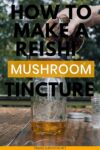Reishi mushrooms are one of nature’s greatest healers.
If you manage to find a patch on your property, you’re in luck! However, processing fresh fungi into functional medicine is a whole new challenge. The best way to harness the power of this shroom is to make a dual-extraction tincture.
Not sure what that means? No worries. Read on to learn how to make a reishi mushroom tincture the right way, plus discover alternative methods to craft a killer custom elixir for your mycological apothecary.
Why a Dual Extraction?
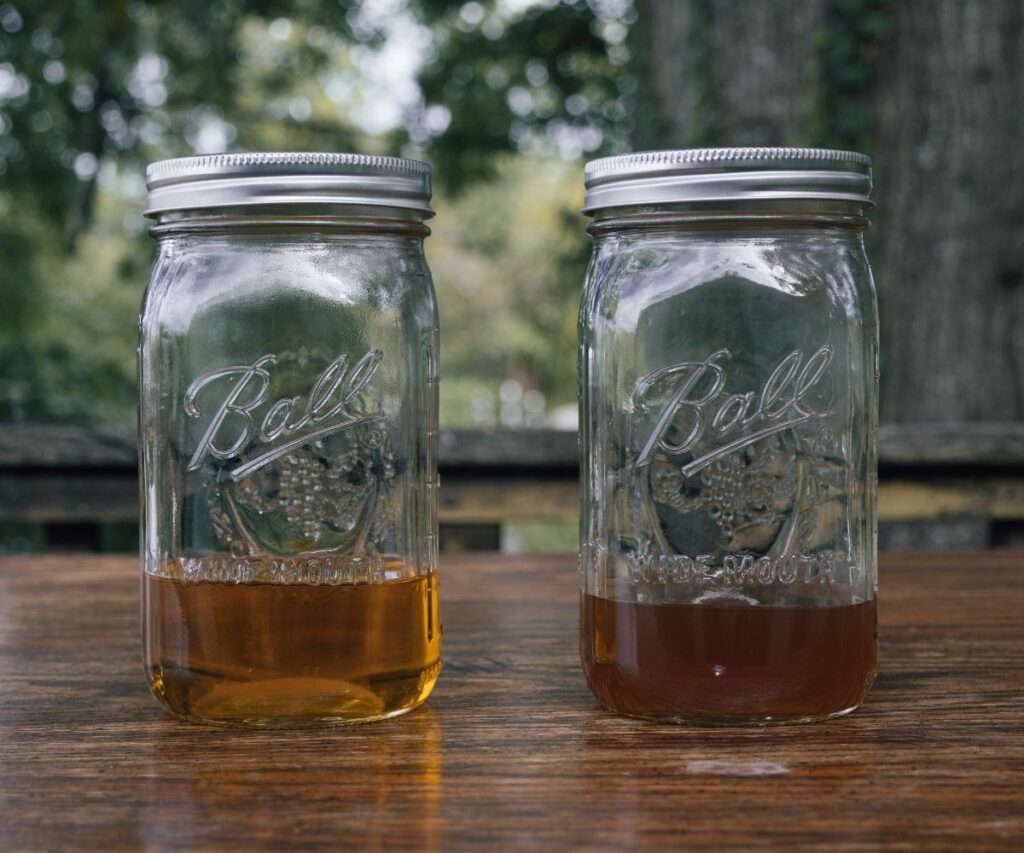
Creating a reishi tincture involves making an alcohol extraction and a water extraction, then combining the two. This is known as a double or dual extraction.
So, why is it necessary?
Reishi contains a variety of medicinal compounds. The most important are polysaccharides and triterpenes, which are bound in the mushroom’s hard flesh. These compounds are not immediately bioavailable to us, so we extract them using various solvents.
Most reishi triterpenes are best extracted with alcohol, while most polysaccharides are best extracted in water. So, to obtain the widest variety of medicine from your mushrooms, you must use both methods.
Materials to Make Reishi Tincture
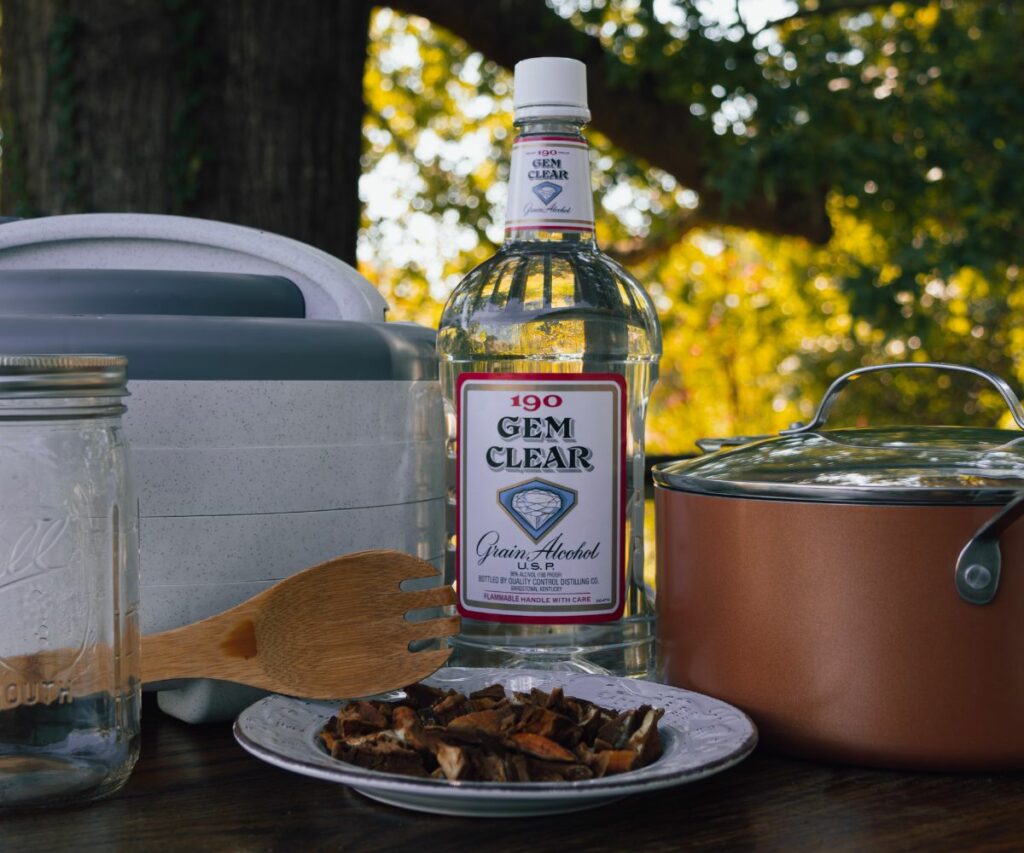
Making a reishi tincture isn’t difficult, but you will need to source a few items from outside your home. Here’s what you’ll need to get started:
- Reishi mushrooms: Start with the good stuff! Any reishi species can make a beneficial tincture. Just ensure you have fresh foraged specimens or buy dried fungi from a reputable source.
- Alcohol: We need alcohol to extract beneficial triterpenes from reishi. Since these fungi are tough and woody, it’s appropriate to use a robust 190-proof alcohol like Everclear. This high proof closely mirrors ethanol, a safe and popular solvent used in many studies involving herbal extracts. If you can’t buy 190-proof liquor in your state, you can use a lesser proof, but you’ll need to adjust the water-to-alcohol ratio slightly when combining the extractions.
- Water: We need water to extract valuable polysaccharides from reishi. Your tap water will work perfectly.
- Stove pot: You’ll need to heat a pot on the stove to perform the water extraction, also known as a decoction. Any large, lidded soup pot will work.
- Strainer or filter: A strainer will help separate the fungal matter from the liquid during both extractions. Cheesecloth or coffee filters secured with rubber bands work great. If you really enjoy tincture-making, it’s wise to invest in a dedicated small-particle filter like the Toncoo strainer. I have one, and it streamlines the tincturing process immensely — it even has a funnel for easy transfer!
- Mason jars: These are for handling, holding, and mixing your extractions. I like mason jars because they’re solid and hold up when exposed to 190-proof alcohol for long periods, but you can use whatever jars you have.
- Amber tincture bottles: I strongly suggest bottling the finished product in amber glass tincture bottles. Tinctures are easier to take from dedicated bottles with droppers, and dark glass will slow degradation and evaporation over time.
How to Make Reishi Double Extraction Tincture
1. Source the Right Reishi
Ideally, you’ll be able to forage reishi yourself. That way, you can control the quality and choose fresh varieties from species you trust. If you’re buying reishi, be discerning. You don’t want any old mushrooms you find online. Ask around at your local mycology group to find trustworthy sources.
Alternatively, you can check out the North American Mycological Association’s cultivation resources page to learn about growing your own reishi.
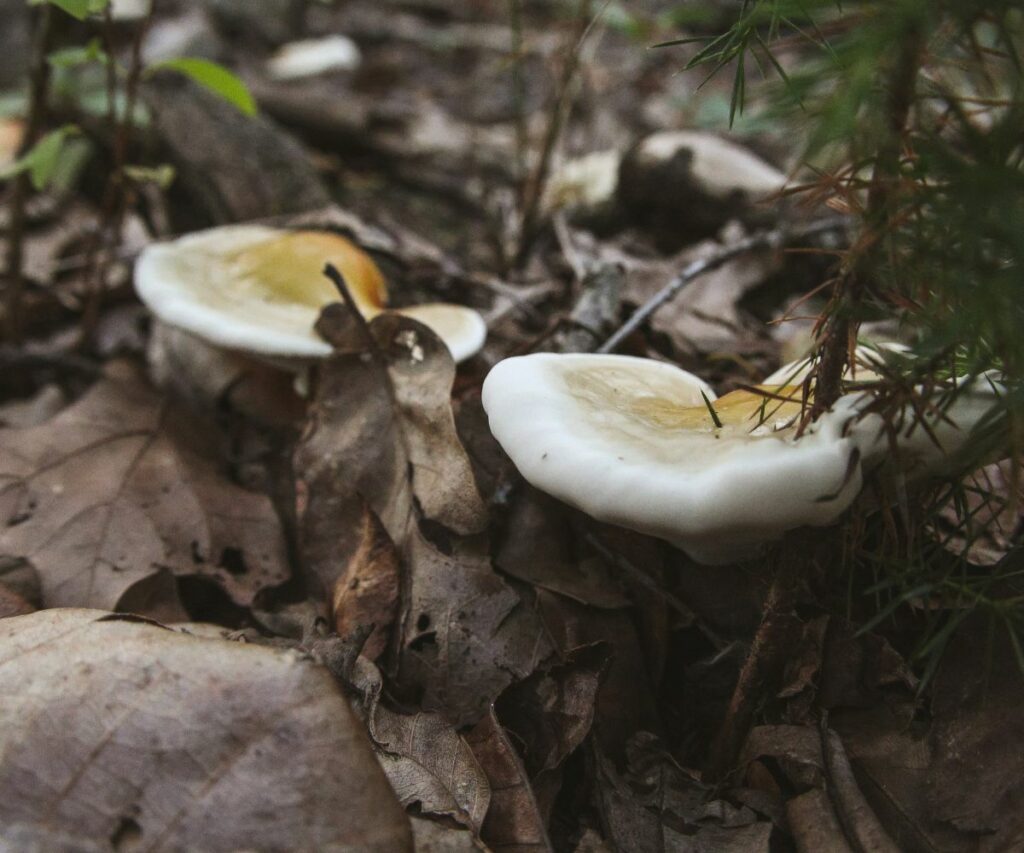
2. Clean and Chop Mushrooms
If you buy pre-dried mushrooms, you won’t need to chop and dehydrate them. But if you forage fresh reishi, you’ll need to stay on your toes and start the preparations immediately. These fungi are notoriously tough and woody. The longer you wait after harvesting, the more difficult they are to work with.
Clean off dirt and debris with a damp cloth and pick off any insects residing in your reishi. Then, cut the fruits into pieces about the size of a single die. The smaller the pieces are, the more surface area will touch the alcohol. In theory, this will make a more potent extraction.
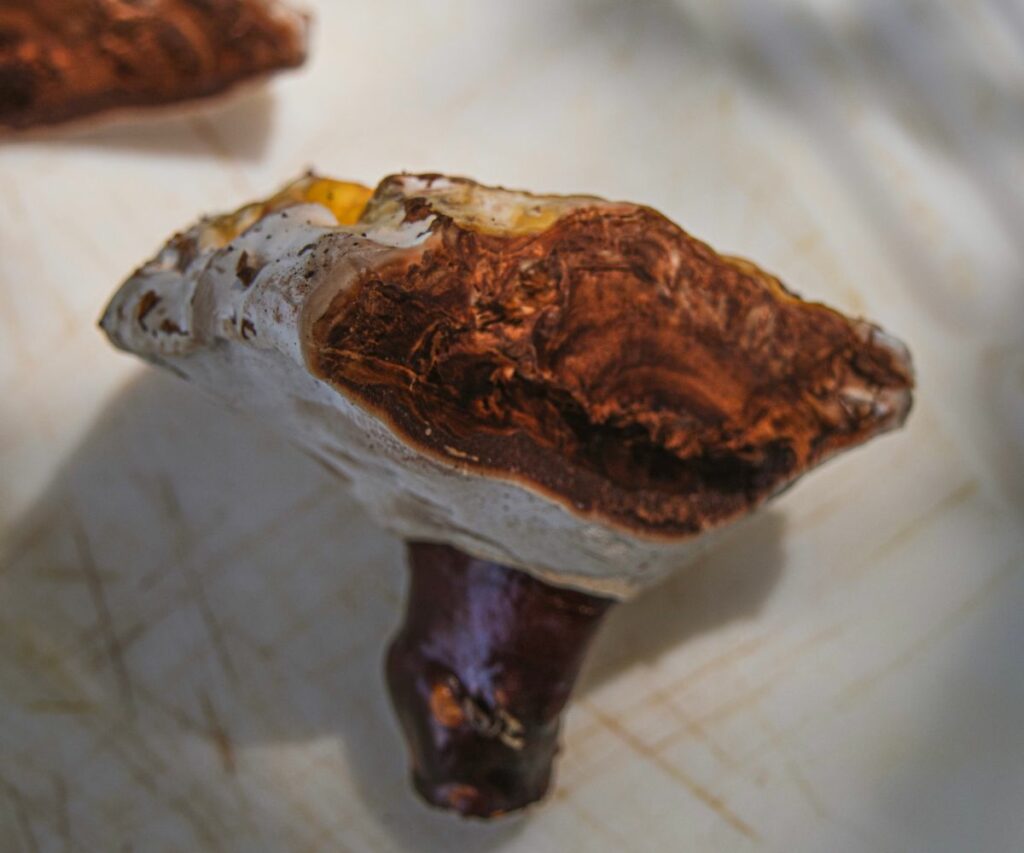
3. Dehydrate Reishi
Dehydrating your reishi is most likely better than using fresh fungal matter. While actual studies are lacking in this regard, it seems sensical that removing all water will create a more concentrated medicinal base. Additionally, dry mushrooms last indefinitely. The clock of life ticks quickly on fresh fungi, and they could cause your tincture to go rancid.
I use a dehydrator or air-dry my reishi. You can follow the directions in my mushroom drying guide to get perfectly dehydrated fungi regardless of what equipment you have!
Optional: Once dry, you could also blitz the fungi in a food processor. This will stretch the surface area touching the alcohol even further, potentially giving you access to greater concentrations of compounds. However, it could also trip you up. If you grind reishi too finely, you’ll have trouble straining them later, and pieces could remain in your tincture.
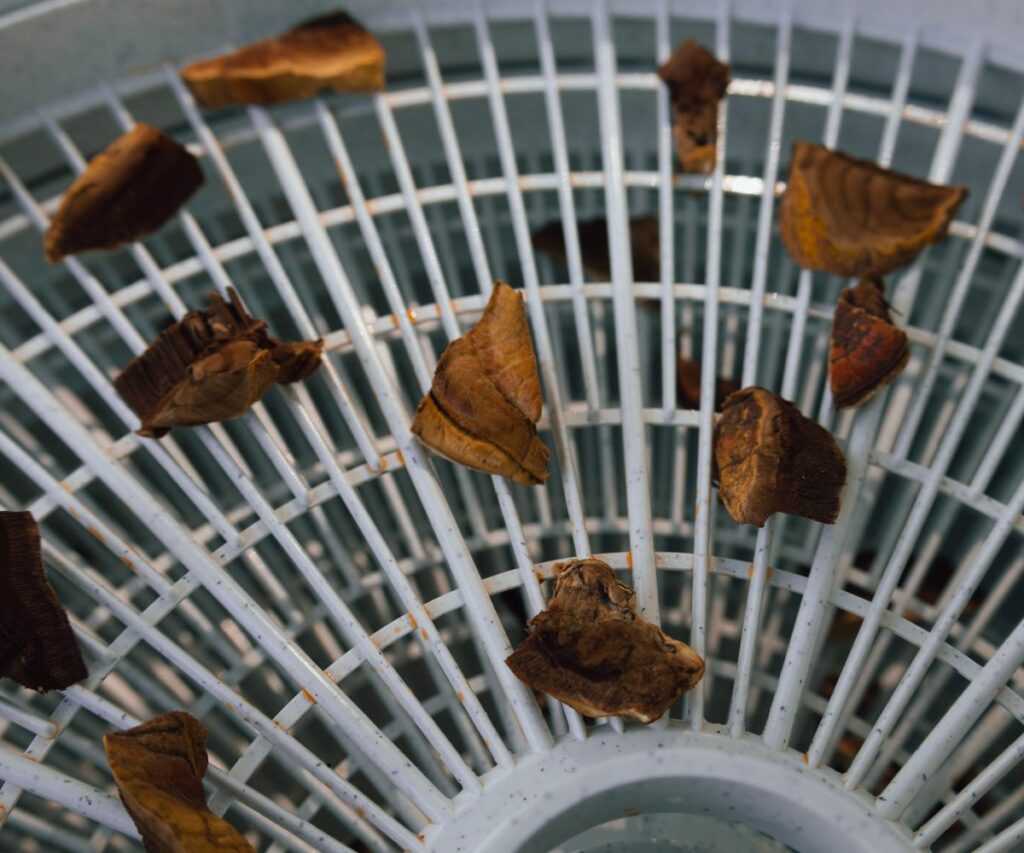
4. Mix With Alcohol
Fill a mason jar halfway with dried reishi. Use additional jars if you have more reishi than will fill a single jar halfway. You don’t want to crowd the shrooms inside; you want to leave plenty of space for the alcohol to surround them and extract all the compounds.
Once your jar is half-filled with fungi, pour in the alcohol. Completely cover the mushrooms, but leave some space on top so the alcohol doesn’t touch the lid. This is powerful stuff and could corrode the rim.
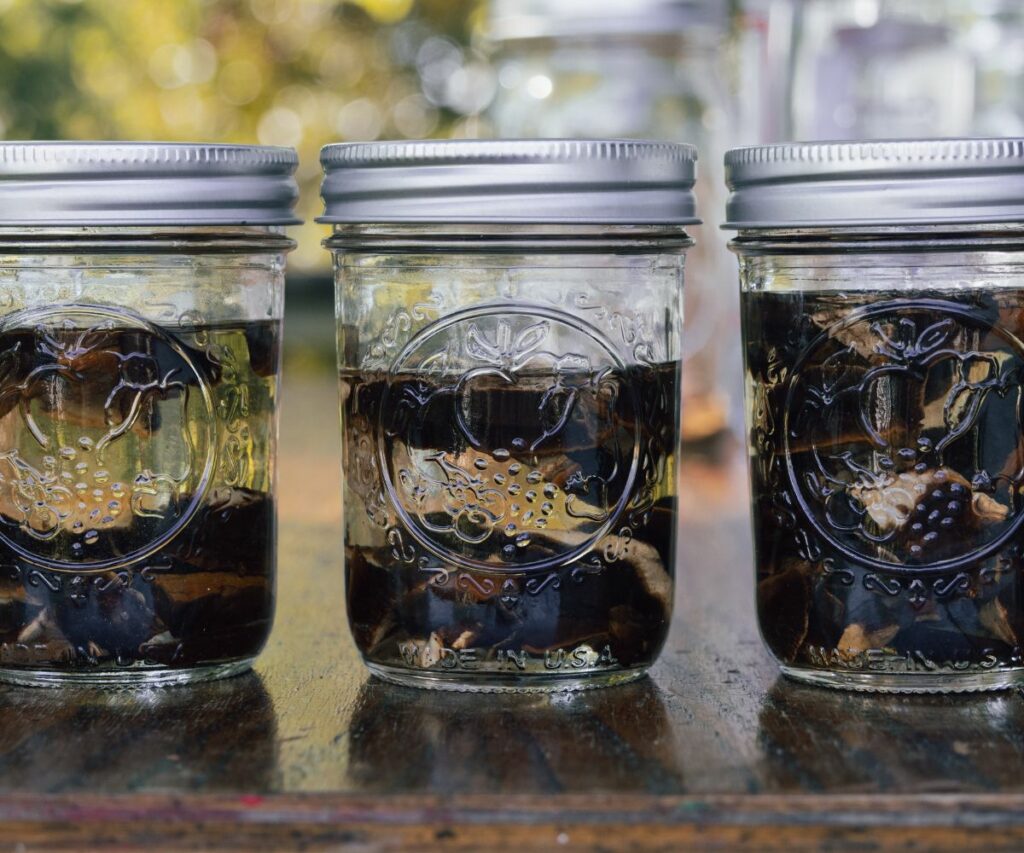
5. Leave for Extraction
Put the lids on the jars and leave them in a cool, dark place. The jury’s still out on exactly how long you should let them sit, but the general rule is anywhere from four to six weeks.
Every day, shake the jars. Turn them around and upside down, and swirl them around a little bit. The movement will help alcohol get in all the crevices, loosening up the tough, fibrous fungal structure so you get more goodness out of them. Eventually, the alcohol will turn brown as the compounds infuse it.
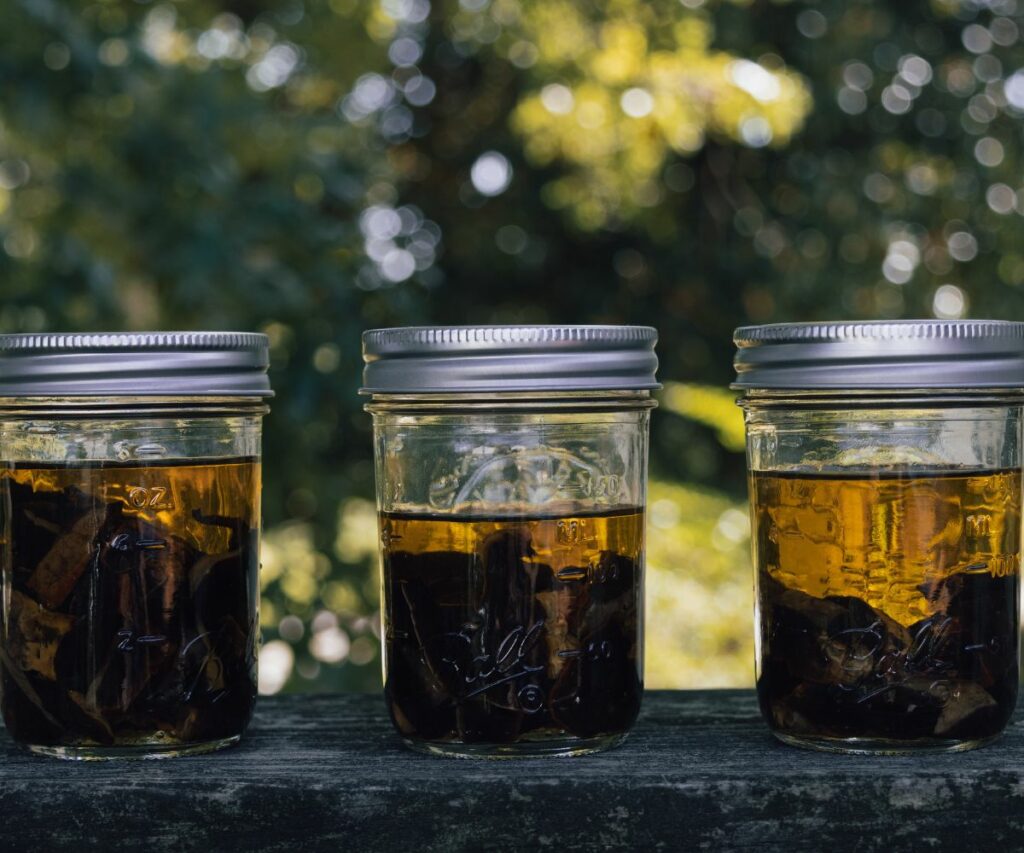
6. Strain Shrooms From Alcohol
Once four to six weeks have gone by, you can strain the organic matter out of the alcohol. I use my Toncoo for this, but a cheesecloth and a rubber band will work in a pinch.
Just put the cheesecloth around the mouth of an empty jar and tie it off with the rubber band. If no cheesecloth is available, you can use a coffee filter or an old (but clean) piece of cotton clothing you don’t care about anymore.
Pour the jar full of reishi extract through the cheesecloth and into the empty jar below. The process can take a while since the cloth will get clogged with mushroom debris. Once the straining is complete, squeeze the cloth to remove every last drop of liquid.
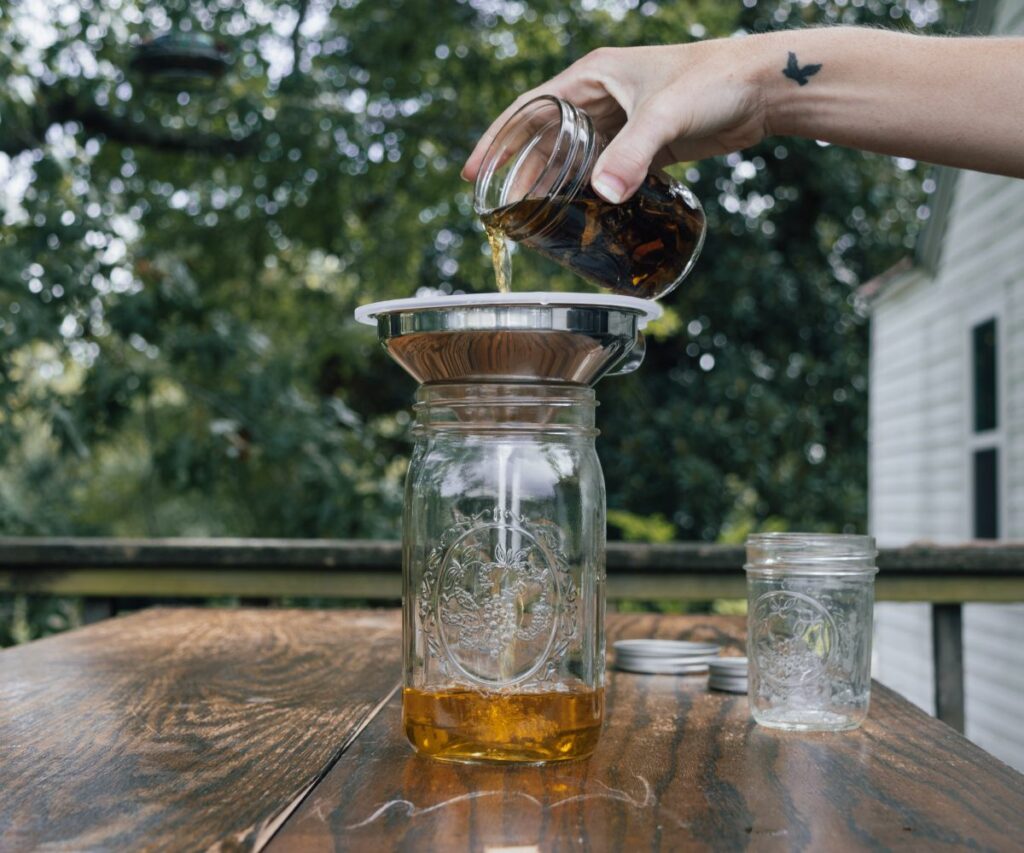
7. Measure Up
Measure how much alcohol solvent you have left over after you strain the reishi. Once you know how much alcohol you have, you can calculate how much water you need. The final product should contain around 25% alcohol by volume (ABV).
Why does this matter?
Well, it’s not an exact science. But to protect the integrity of delicate polysaccharides, renowned mycologist and herbalist Christopher Hobbs suggests making a mixture of about 25% alcohol. Many other herbalists agree on ratios between 20% and 30%, and a tincture at this ABV will likely remain shelf-stable over time without destroying any medicine.
If you use 190-proof alcohol, you’ll need about three and a half times that amount of water. For example, if you have one cup of alcohol extract, you will need three and a half cups of water when all is said and done. Since decoctions reduce while simmering, it’s a good idea to give yourself a bit of leeway here. In this case, you can start by simmering four cups, expecting some water to dissipate as the decoction reduces.
If you use regular 80-proof alcohol, you’ll need to combine it with about one and a half cups of decoction. In this case, you can start with around two cups of water.
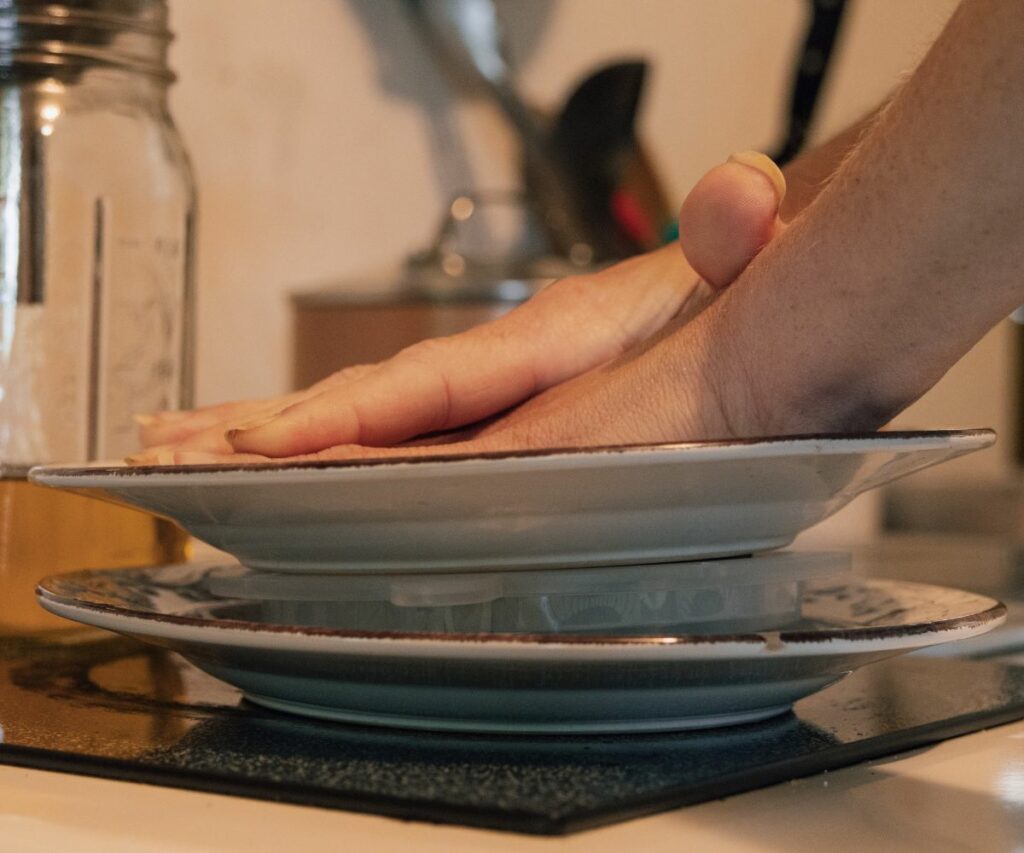
8. Simmer Reishi in Water
Ready to get rid of those of alcohol-soaked mushrooms? Just place them in the bottom of a stove pot and cover them with the water you measured in step six.
Set the stove on medium and bring the water to a simmer. We don’t want to boil the reishi, which could destroy some of their valuable material. We only want to heat them enough to release their compounds.
Leave the reishi to simmer for two to four hours. This should be enough time for a healthy water extraction and give the stock time to reduce a little bit.
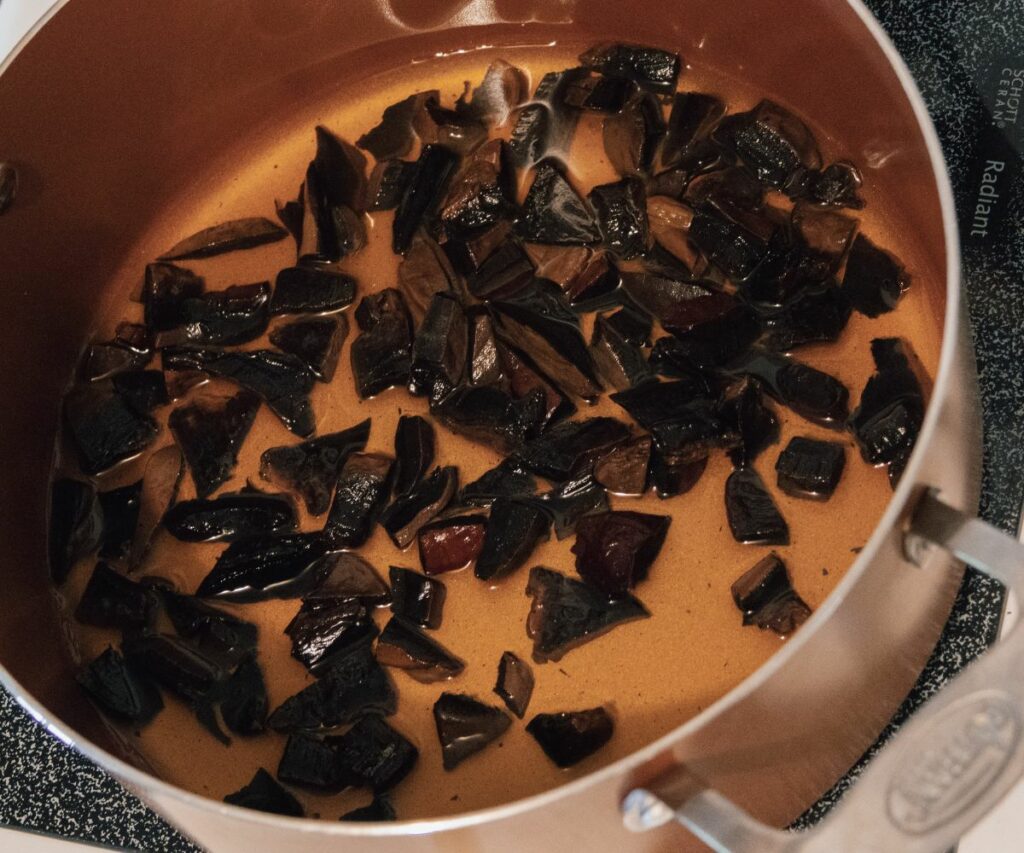
9. Strain Shrooms From Water
Once you have the decoction, you can strain it once more. Remember to squeeze out all the water you can. Once you’ve strained them into a jar, you can toss the leftover fungi into the compost.
Alternatively, you could perform a second extraction with them. I don’t know how effective this will be, but it could be worth a shot if reishi is rare in your area.
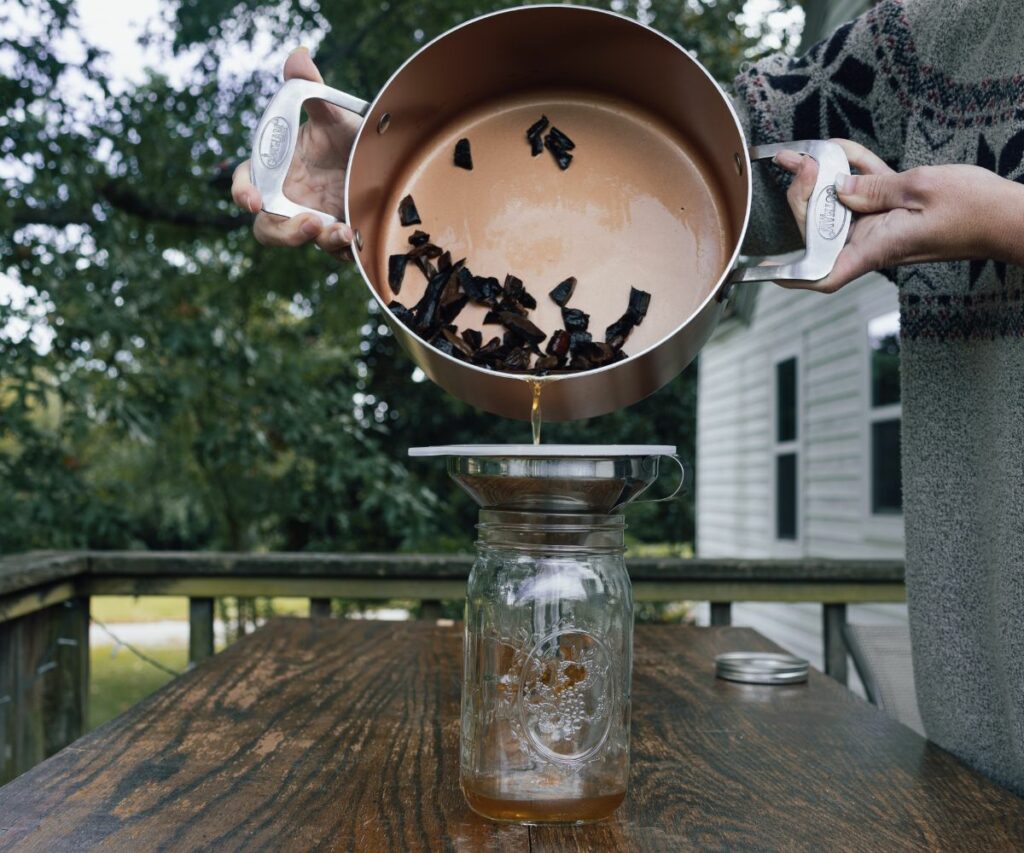
10. Combine the Extractions
You should be left with a jar of water extract and a jar of alcohol extract. All that’s left to do is combine them into a single jar. Add the alcohol to the tincture slowly, stirring gently with a spoon.
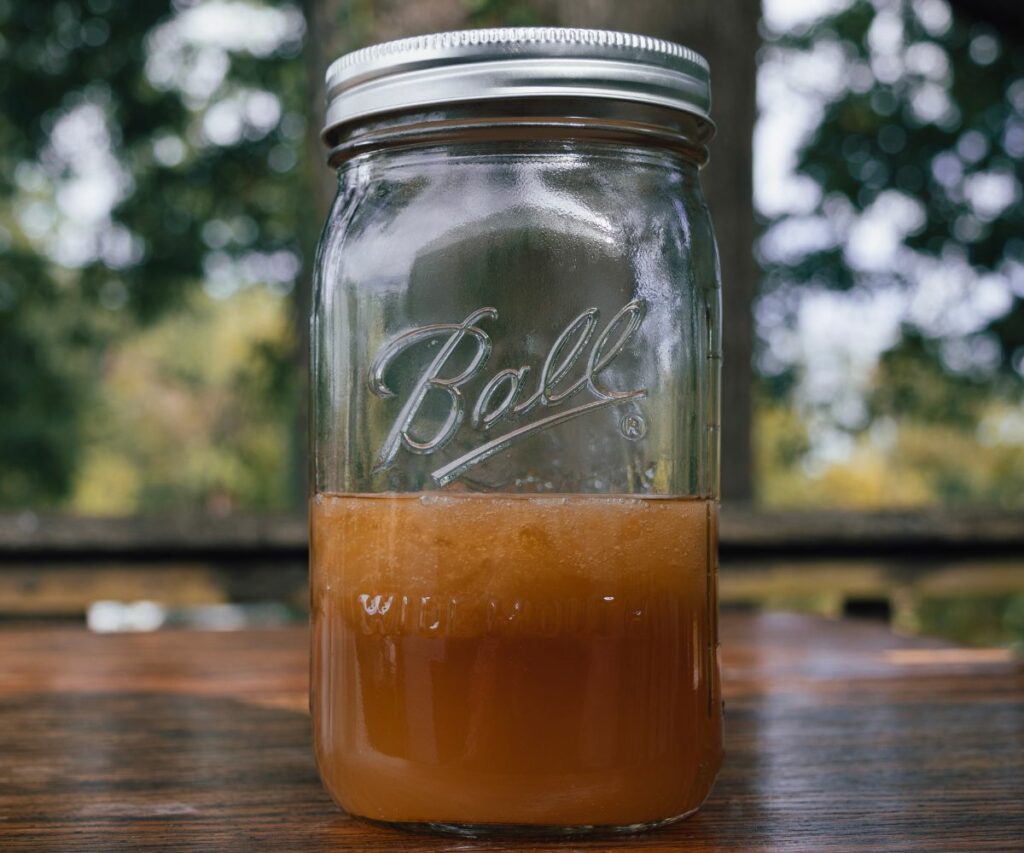
11. Store Properly and Enjoy!
Once you’ve combined your alcohol and water extractions, you’ve got a bona fide double-extraction reishi tincture. All that’s left to do is bottle and store it. Use a small funnel to pour your mix into the amber tincture bottles. Label and keep them in a cool, dark place.
Your daily dosage will depend on your preferences and what ails you. I take a dropperful every night before bed for restful sleep and immune function, and that works great for me!
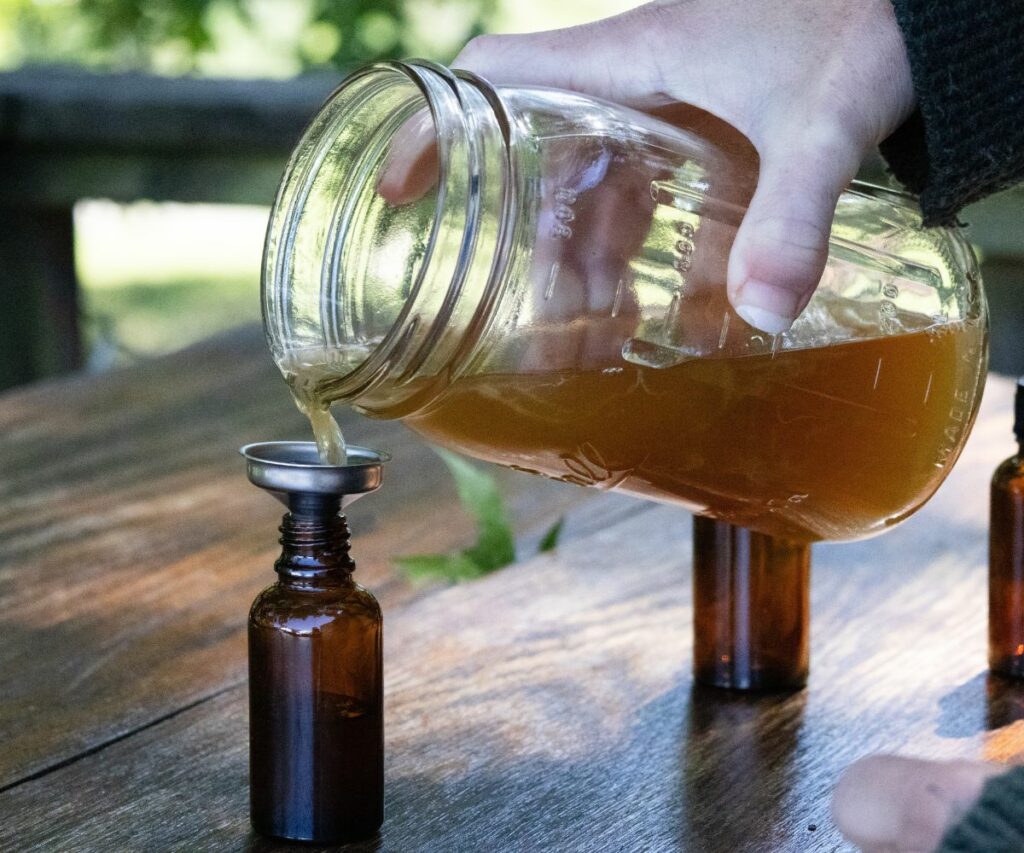
Alternative Reishi Tincturing Options
The recipe above is simply what works for me. However, there are issues with any method. We have little scientific evidence surrounding folk tinctures in general, and many professional herbalists disagree on preparation techniques like alcohol-to-water ratios and methodological order.
Some people are suspicious that high-proof alcohol can alter or degrade polysaccharides during the initial extraction. If you’re concerned, you can use separate batches of dried reishi for the respective extractions. You could also play around with decocting first, then extracting in alcohol.
Don’t be afraid to get creative and experiment! Measurements don’t have to be precise. You can judge your method’s effectiveness based on the final product’s color, cloudiness, and how you feel after taking it for several weeks.
Ready to tincture some reishi? Let the foraging begin! Now that you know how to extract medicine from these powerful fungi, you can take advantage of any flushes you might find on your property.
